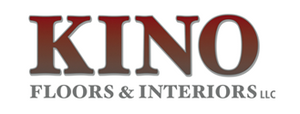Types (tile & stone)
Types of Ceramic Tile
Ceramic tile has been used for centuries and offers consumers more options in color, texture, pattern and overall beauty than most other floor covering materials. With new manufacturing techniques today's ceramic tile designs are virtually indistinguishable from natural marbles, travertines, slates and other stone products. Glazed ceramic and porcelain tiles are great choices for bathrooms, kitchens, foyers, sun rooms and great rooms.
For over a century homeowners have counted on Mohawk for all their floor coverings. With Mohawk Ceramic Tile you can let your imagination go free and express your unique and personal decorating tastes. Mohawk Ceramic Tile features all the latest tile fashion trends in colors, sizes and designs including decorative insets and borders. To help you select your Mohawk Ceramic Tile there are some terms you should know before going shopping.
Wall Tile
Ceramic wall tiles are normally less durable than tile designed specifically for flooring. Most wall tile is glazed with a semi-gloss or matte surface. The glazed surface has a very low slip resistance and becomes slippery when wet. Therefore, glazed wall tile is much more suited for wall or countertop applications rather than floors.
Glazed Ceramic Tile
Glazed Ceramic Tile is comprised of two basic elements, clay and water. Various clays are mined, ground and blended to a fine powder, and pressed together to form the body of the tile. The pressed clay body is then dried to reduce the moisture content. Next, the surface of the tile is coated with a colored glaze (similar to glass). The glaze is then permanently fused to the surface of the tile by firing it in kilns at approximately 2000° Fahrenheit, to form the finished product.
Porcelain Tile
Porcelain tile is made from a blend of fine-grain clays and other minerals to produce a very dense body, which makes it highly resistant to moisture, staining and wear. Because of these features, porcelain tile will withstand years of heavy foot traffic in both interior and exterior applications while maintaining its color and beauty.
ColorBody™ Porcelain Tile
This is the densest of all tile types, ColorBody™ Porcelain Tile has a through-color body and is defined by its <0.5% water absorption. These tiles can withstand heavy foot traffic and are suitable for both indoor or outdoor applications.
To determine the overall performance and durability of the glazed surface of ceramic tile, there are standardized industry tests and classifications which rate tile's specific resistance to scratching, breaking, abrasion, moisture, etc...
Scratch Hardness
Most tiles are rated for hardness or scratch resistance using the MOHS Test and rating system. The MOHS test rates tile from 1 (softest) to 10 (hardest). Ceramic tile with a value of 5 or more is suitable for most residential floor tile applications. Tile with a value of 7 or higher is normally acceptable for most commercial applications or heavy traffic areas.
Wear Rating
To help select suitable tiles for specific applications tiles are rated the P.E.I. (Porcelain Enamel Institute) scale. The tiles are evaluated for wear resistance on a scale from 1 (lowest) to 5 (highest).
- PEI 1: Light Traffic - recommended for residential bathrooms or other areas with light traffic and where shoes are not frequently used.
- PEI 2: Medium Traffic - recommended for residential interiors, except entryways, kitchens, stairs or any area where tiles may come into contact with gravel or sand.
- PEI 3: Medium-heavy Traffic - recommended for all residential interiors and light commercial applications. Not recommended for commercial entryway.
- PEI 4: Heavy Traffic - suitable for all residential interiors and most commercial applications, including shopping malls and public areas.
- PEI 5: Heavy-plus Traffic - all residential and commercial areas where heavy-duty wearability is needed.
Water Absorption
Ceramic tile are also classified by their water absorption rate which reflects the density of the body of the tile. There is a direct relationship to the water absorption rate and the suitability of the various types of tile for interior or exterior applications. Tiles suitable for exterior applications must have a very low water absorption rate, especially in climates subject to freezing and thawing cycles. These are typically porcelain body tiles which have a moisture absorption rating of less than .5 %.
Shading
Like the natural products themselves tiles will vary in shading. This adds to the beauty and design of the products. When choosing a tile it's best to view 2-3 tiles together to visually determine the overall appearance of the tile.
